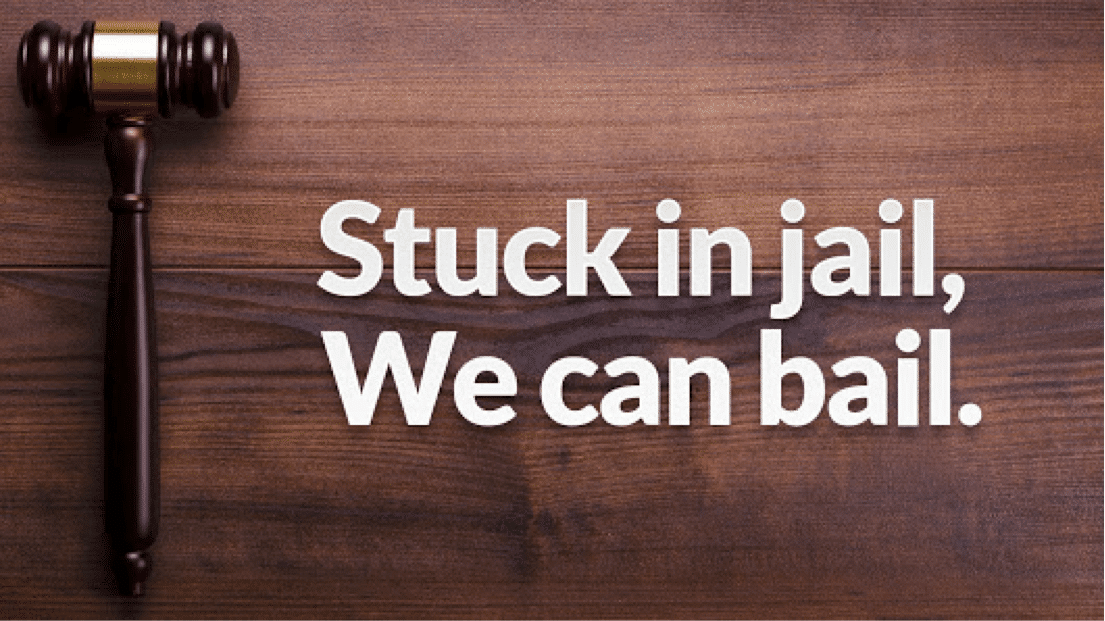Exactly How Bail Bonds Function and Their Role in Wrongdoer Justice
Bail bonds serve as a critical monetary device within the criminal justice system, helping with the temporary release of accuseds while they wait for test. This procedure includes a bail bondsman billing a cost to safeguard a bond, which guarantees the court that the accused will certainly show up for their set up hearings. While these bonds intend to maintain the principle of assumed virtue, they also spark vital discussions surrounding problems of equity and access, specifically for low-income people. As the landscape of Bail reform develops, the ramifications of these mechanisms necessitate more exam.
Introduction of Bail Bonds
The idea of Bail bonds functions as an important system within the criminal justice system, promoting the momentary release of individuals awaiting trial. This system operates the concept that offenders must not be needlessly detained prior to their court look, offered they pose no considerable flight risk or risk to public security. Bail bonds make it possible for accuseds to safeguard their launch by giving a monetary warranty, ensuring their existence at subsequent court days.
Bail can be set by a judge, who thinks about various aspects, including the intensity of the alleged offense, the defendant's criminal history, and community ties. If an offender can not pay for the full Bail amount, they may seek assistance from a bondsman, who usually charges a non-refundable fee, normally around 10% of the complete Bail. In return, the bondsman thinks the risk of the defendant stopping working to show up in court.
The bail bond system is not without its objections, as it questions about equity and ease of access in the justice process. Several suggest that the dependence on economic problems for launch disproportionately affects low-income individuals, possibly worsening social inequalities within the lawful framework.
The Bail Bond Process
Navigating the bail bond procedure includes numerous essential actions that both offenders and their family members must comprehend. At first, after an apprehension, the court will set a bail amount based upon the extent of the costs, the defendant's criminal history, and the regarded trip danger. Once the Bail quantity is developed, offenders or their households can come close to a bail bondsman for assistance.
The following action is to give the bondsman with essential info, consisting of the offender's information and the Bail amount. The bondsman will generally charge a non-refundable cost, normally a portion of the overall Bail, which is mandated by state policies. In exchange, the bail bondsman problems a bail bond to the court, safeguarding the defendant's release from custodianship.
Upon launch, it is essential for the offender to follow all court looks. Failure to do so can lead to the loss of the bail bond and potential lawful repercussions. Throughout the procedure, clear interaction with the bondsman is important to guarantee all needs are met and to facilitate a smooth change back to flexibility while waiting for trial.
Kinds Of Bail Bonds
Bail bonds can be categorized right into numerous types, each providing and offering unique objectives to different scenarios. One of the most typical kind is the guaranty bond, where a bail bondsman offers the court with an assurance for the full Bail quantity for a charge, usually around 10% of the Bail. This is beneficial for offenders that can not pay for the entire Bail quantity upfront.
An additional type is the money bond, which requires a family or the accused member to pay the full Bail quantity in cash to the court. If the offender stands for all court days, the cash money is reimbursed after the case concludes, minus any type of charges.
Residential property bonds involve making use of property as security for the Bail quantity. If the accused falls short to show up, the court can seize the residential property. There are immigration bonds specifically for non-citizens detained by migration authorities, enabling for their release while waiting for hearings.
Each kind of bail bond offers various economic ramifications and risks, enabling accuseds to navigate the complexities of the criminal justice system in a method that best matches their situations.
Influence On Defendants and Families
Understanding the different kinds of Bail bonds is vital for comprehending their broader effect on defendants and their households. The Bail system usually positions significant monetary stress on individuals and their loved ones, specifically when money Bail is needed. For many households, protecting the funds for Bail can bring about monetary challenge, forcing them to divert sources from necessary demands such as housing and education and learning.
Additionally, the psychological toll on accuseds and their households can be profound. The unpredictability bordering court dates, potential imprisonment, and the stigma of a criminal charge can create long-term stress and anxiousness. Households might experience a sense of isolation as they browse the complexities of the lawful system, commonly really feeling not really prepared for the challenges ahead.
Furthermore, the reliance on Bail bonds can bring about an ongoing cycle of financial obligation. Family members may incur significant expenses when using bail bond solutions, consisting of fees that can reach up to 10% of the Bail quantity. This economic concern can intensify existing socioeconomic variations, making it hard for family members to recoup also after the lawful procedures conclude. Therefore, the ramifications of Bail bonds view website extend much past the courtroom, affecting the financial and social textile of families included.
Existing Discussions on Bail Reform
Amidst recurring discussions regarding the justice system, present discussions on Bail reform have actually gathered significant interest from policymakers, supporters, and the general public. The key focus of these arguments is the integral injustices in the cash money Bail system, which doubters suggest disproportionately affects low-income individuals and communities of color. Supporters for reform compete that the present system bolsters cycles of hardship and incarceration, as many offenders are incapable to pay Bail and continue to be incarcerated pre-trial, this contact form often causing task loss, family members disruption, and unfavorable legal outcomes.

As different territories explore options, such as risk evaluation tools and pre-trial services, the discussion proceeds to progress. The ramifications of these reforms are far-ranging, calling for a cautious equilibrium between guaranteeing justice and keeping public safety and security.
Conclusion
Bail bonds serve a significant feature in the criminal justice system by facilitating short-term launch for accuseds while awaiting trial. This monetary device equilibriums the civil liberties of the implicated versus public safety and security concerns. The reliance on Bail bonds highlights problems of equity and availability, specifically for low-income individuals. bail bonds medina ohio. Recurring arguments concerning Bail reform remain to highlight the demand for a more just and fair system that deals with the disparities produced by present Bail techniques.

The most typical type is the surety bond, where a bail bondsman supplies the court with a guarantee for the full check this Bail amount in exchange for a charge, typically around 10% of the Bail. The Bail system frequently positions substantial economic stress on individuals and their enjoyed ones, specifically when cash money Bail is required. Households may incur considerable expenses when using bail bond services, including fees that can reach up to 10% of the Bail amount.